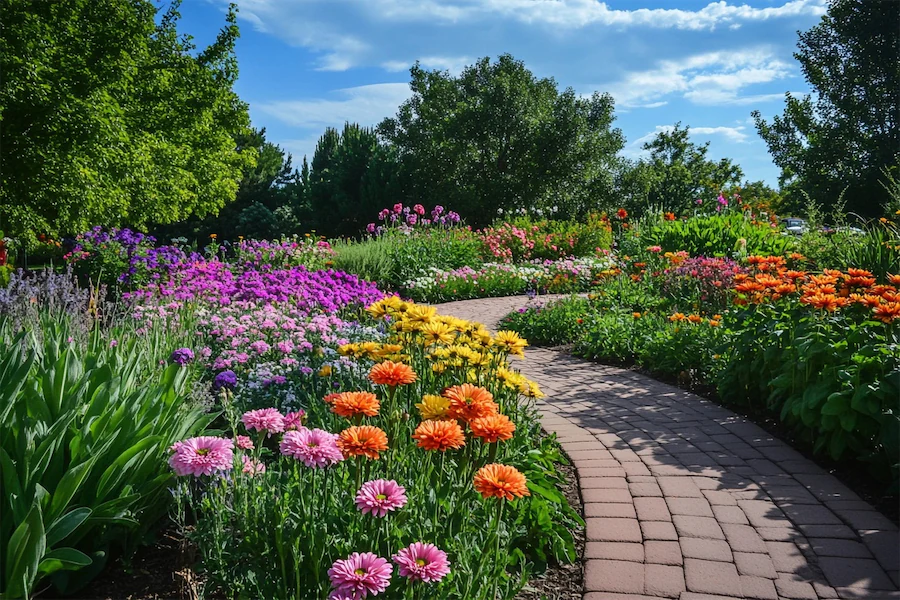A floral garden, commonly known as a flower garden, is a dedicated space where various flowering plants are cultivated for their aesthetic appeal, fragrance, and ability to attract pollinators. These gardens can range from small backyard plots to expansive public displays, each designed to showcase the beauty and diversity of flowers.
History and Origins of Floral Gardens
The tradition of cultivating floral gardens dates back to ancient civilizations. In Egypt, gardens were integral to temple complexes, featuring lotus ponds and rows of papyrus. Persian gardens, known for their geometric layouts and abundant flowers, influenced garden designs across the Middle East and Asia. During the Renaissance, European gardens became more elaborate, emphasizing ornamental flowers arranged in intricate patterns. These historical influences have shaped modern floral garden designs, blending cultural aesthetics with horticultural practices.
Key Features of Floral Gardens
Floral gardens are characterized by several essential elements:
- Diverse Plant Selection: Incorporating a variety of annuals, perennials, bulbs, and shrubs ensures continuous blooms throughout the growing season. This diversity not only enhances visual interest but also supports a healthy ecosystem by attracting different pollinators.
- Color Harmony: Thoughtful color combinations create visual appeal. Utilizing the color wheel can guide harmonious pairings; for instance, complementary colors like purple and yellow can make a striking display.
- Structural Elements: Incorporating pathways, borders, and focal points like sculptures or water features adds depth and structure to the garden. These elements guide visitors through the space and create distinct areas within the garden.
- Seasonal Interest: Planning for a succession of blooms ensures the garden remains vibrant across different seasons. Including early spring bulbs, summer perennials, and late-blooming annuals can provide continuous color.
Applications of Floral Garden Design
Floral gardens serve various purposes:
- Residential Gardens: Homeowners can create personal sanctuaries by designing gardens that reflect their preferences, whether it’s a formal rose garden or a casual cottage-style plot. These spaces offer relaxation and a connection to nature.
- Public Spaces: Parks and botanical gardens often feature extensive floral displays, providing educational opportunities and communal enjoyment. These public gardens can showcase rare species and demonstrate sustainable gardening practices.
- Therapeutic Gardens: Healthcare facilities incorporate floral gardens to promote healing and well-being, utilizing the calming effects of nature to support patient recovery. The sensory experiences offered by such gardens can reduce stress and improve mood.
Considerations When Creating a Floral Garden
When planning a floral garden, consider the following:
- Site Assessment: Evaluate sunlight exposure, soil type, and drainage to select appropriate plant species. Most flowering plants require at least six hours of direct sunlight daily.
- Maintenance Commitment: Regular tasks such as watering, weeding, deadheading, and fertilizing are essential to maintain plant health and aesthetics. Implementing mulching can help retain soil moisture and suppress weeds, reducing maintenance efforts.
- Pest and Disease Management: Monitoring for common issues and adopting integrated pest management strategies can prevent infestations and minimize chemical use. Encouraging beneficial insects and selecting disease-resistant plant varieties are effective practices.
Conclusion
Floral gardens offer a dynamic and colorful addition to any landscape, providing aesthetic pleasure and ecological benefits. By understanding their historical context, key features, and practical applications, gardeners can design and maintain spaces that flourish season after season, enriching both private and public environments.
